Blog - Foot Doctor, Chambersburg and McConnellsburg, PA
Managing Your Morton’s Neuroma
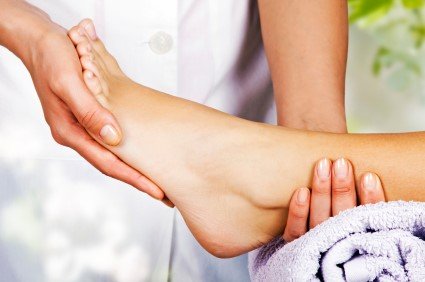 Morton’s neuroma can be one potential cause of forefoot pain, a condition of the feet in which the metatarsal bones rub together. This can lead to numbness, pain, inflammation, and tingling sensations. Those who have morton’s neuroma will experience their interdigital nerve becoming irritated and swollen. The swelling is a response to protect the bones from rubbing further together. Ill-fitting shoes with small widths can cause morton’s neuroma. See a podiatrist to properly diagnose and treat your condition.
Morton’s neuroma can be one potential cause of forefoot pain, a condition of the feet in which the metatarsal bones rub together. This can lead to numbness, pain, inflammation, and tingling sensations. Those who have morton’s neuroma will experience their interdigital nerve becoming irritated and swollen. The swelling is a response to protect the bones from rubbing further together. Ill-fitting shoes with small widths can cause morton’s neuroma. See a podiatrist to properly diagnose and treat your condition.
Morton’s Neuroma is a very uncomfortable condition to live with. If you think you have Morton’s neuroma see Dr. Steven Schwartz from Pennsylvania. Our doctor will treat your feet in addition to other podiatric-related needs.
Morton’s Neuroma
Morton's neuroma is a painful foot condition that commonly affects the areas between the second and third or third and fourth toe, although other areas of the foot are also susceptible. Morton’s neuroma is caused by an inflamed nerve in the foot that is being squeezed and aggravated by surrounding bones.
What Increases the Chances of having Morton’s Neuroma?
- -Ill-fitting high heels or shoes that add pressure to the toe or foot
- -Jogging, running or any sport that involves constant impact to the foot
- -Flat feet, bunions, and any other foot deformities
Morton’s neuroma is a very treatable condition. Orthotics and shoe inserts can often be used to alleviate the pain on the forefront of the feet. In more severe cases, corticosteroids can also be prescribed. In order to figure out the best treatment for your neuroma, it’s recommended to seek the care of a podiatrist who can diagnose your condition and provide different treatment options.
If you have any questions, please feel free to contact our offices located in Chambersburg and Mcconnellsburg, PA. We offer the newest diagnostic and treatment technologies for all your foot care needs.
Women More Likely to Develop Bunions
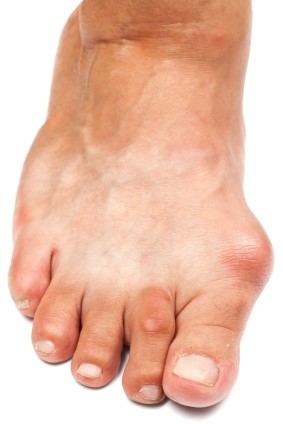 Many women are susceptible to the deformity of the metatarsophalangeal joint, known as a bunion. If not hereditary, many women experience this condition after repeatedly stuffing their feet into shoes with narrow toe boxes. When the first toe begins to turn inward because of the deformity of the join, the other toes will suffer as well. Those in professions where you are often on your feet, such as teachers, nurses, or ballerinas, can experience the onset of bunions more often than those who are not on their feet as much.
Many women are susceptible to the deformity of the metatarsophalangeal joint, known as a bunion. If not hereditary, many women experience this condition after repeatedly stuffing their feet into shoes with narrow toe boxes. When the first toe begins to turn inward because of the deformity of the join, the other toes will suffer as well. Those in professions where you are often on your feet, such as teachers, nurses, or ballerinas, can experience the onset of bunions more often than those who are not on their feet as much.
Bunion surgery usually occurs after non-surgical methods have proved to be ineffective. If you have any concerns, see Dr. Steven Schwartz from Pennsylvania. Our doctor will treat your feet in addition to other podiatric-related needs.
What is a Bunion?
A bunion is formed of swollen tissue or an enlargement of boney growth, usually located at the base joint of the toe that connects to the foot. The swelling occurs by the bones in the big toe shifting inward, which impacts the other toes of the foot. This causes the area around the base of the big toe to become inflamed and painful.
Why do Bunions Form?
- Genetics – susceptibility to bunions are often hereditary
- Stress on the feet – poorly fitted and uncomfortable footwear that places stress on feet, such as heels, can cause bunions to form
How are Bunions Diagnosed?
Doctors often perform two tests – blood tests and x-rays – when trying to diagnose bunions, especially in the early stages of development. Blood tests help determine if the foot pain is being caused by something else, such as arthritis, while x-rays provide a clear picture of your bone structure to your doctor.
How are Bunions Treated?
- Refrain from wearing heels or similar shoes that cause discomfort
- Select wider shoes that can provide more comfort and reduce pain
- Anti-inflammatory and pain management drugs
- Orthotics or foot inserts
- Surgery
If you have any questions, please feel free to contact our offices located in Chambersburg and Mcconnellsburg, PA. We offer the newest diagnostic and treatment technologies for all your foot care needs.
Cowboys Dez Bryant Has Surgery for Broken Foot
 Cowboys wide receiver, Dez Bryant, initially thought he would be able to play through his broken foot, but time told him that would not be the case. Bryant has since had to go through a second bone graft surgery to fix a bone spur. He stated, “I knew what was at stake. I thought I could potentially perform at a high level despite dealing with this foot. It turned out very unfortunate.”
Cowboys wide receiver, Dez Bryant, initially thought he would be able to play through his broken foot, but time told him that would not be the case. Bryant has since had to go through a second bone graft surgery to fix a bone spur. He stated, “I knew what was at stake. I thought I could potentially perform at a high level despite dealing with this foot. It turned out very unfortunate.”
A broken foot requires immediate medical attention and treatment. To learn more, see Dr. Steven Schwartz from Pennsylvania. Our doctor will treat your feet in addition to other podiatric-related needs.
Broken Foot Causes, Symptoms, and Treatment
A broken foot is caused by one of the bones in the foot typically breaking when bended, crushed, or stretched beyond its natural capabilities. Usually the location of the fracture indicates how the break occurred, whether it was through an object, fall, or any other type of injury.
Common Symptoms of Broken Feet:
- Bruising
- Pain
- Redness
- Swelling
- Blue (foot)
- Numbness
- Cold
- Misshapen
- Cuts
- Deformities
Those that suspect they have a broken foot shoot seek urgent medical attention where a medical professional could diagnose the severity.
Treatment for broken bones varies depending on the cause, severity and location. Some will require the use of splints, casts or crutches while others could even involve surgery to repair the broken bones. Personal care includes the use of ice and keeping the foot stabilized and elevated.
If you have any questions, please feel free to contact our offices located in Chambersburg and Mcconnellsburg, PA. We offer the newest diagnostic and treatment technologies for all your foot care needs.
Characteristics of Rheumatoid Arthritis
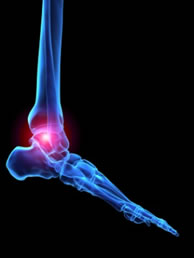 The condition known as rheumatoid arthritis is characterized as an autoimmune disease which is chronic and joints in the feet and hands often flare up. This occurs because the body’s immune system is attacking its own healthy cells. Treating and diagnosing your rheumatoid arthritis is a crucial first step in slowing the progression of symptoms. If you experience symptoms such as stiffness and pain anywhere in the joints of your body or irritated eyes, loss of appetite, fatigue, and more, make sure to see a podiatrist. Patients who do not treat their rheumatoid arthritis symptoms can find their symptoms progressing into a terminal illness that can lead to physical disability.
The condition known as rheumatoid arthritis is characterized as an autoimmune disease which is chronic and joints in the feet and hands often flare up. This occurs because the body’s immune system is attacking its own healthy cells. Treating and diagnosing your rheumatoid arthritis is a crucial first step in slowing the progression of symptoms. If you experience symptoms such as stiffness and pain anywhere in the joints of your body or irritated eyes, loss of appetite, fatigue, and more, make sure to see a podiatrist. Patients who do not treat their rheumatoid arthritis symptoms can find their symptoms progressing into a terminal illness that can lead to physical disability.
Because RA affects more than just your joints, including the joints in your feet and ankles, it is important to seek early diagnosis from your podiatrist if you feel like the pain in your feet might be caused by RA. For more information, see Dr. Steven Schwartz from Pennsylvania. Our doctor will treat your feet in addition to other podiatric-related needs.
What Is Rheumatoid Arthritis?
Rheumatoid Arthritis (RA) is an autoimmune disorder in which the body’s own immune system attacks the membranes surrounding the joints. Inflammation of the lining and eventually the destruction of the joint’s cartilage and bone occur, causing severe pain and immobility.
Rheumatoid Arthritis of the Feet
Although RA usually attacks multiple bones and joints throughout the entire body, almost 90 percent of cases result in pain in the foot or ankle area.
Symptoms
- Swelling & pain in the feet
- Stiffness in the feet
- Pain on the ball or sole of feet
- Joint shift and deformation
Diagnosis
Quick diagnosis of RA in the feet is important so that the podiatrist can treat the area effectively. Your doctor will ask you about your medical history, occupation, and lifestyle to determine the origin of the condition. Rheumatoid Factor tests help to determine if someone is affected by the disease.
If you have any questions, please feel free to contact our offices located in Chambersburg and Mcconnellsburg, PA. We offer the newest diagnostic and treatment technologies for all your foot care needs.
Treating Your Toenail Fungus Properly
 Toenail fungus can become unsightly if not treated properly. Fungal infections that grow on the toenails are characterized as dark or yellow colorations on brittle nails. Toenail fungus may affect adults more commonly as they age, but can be treated with easy remedies at home. Antifungal cream that can be bought over-the-counter should be applied to the afflicted area. Continue treatment as necessary, and trim white spots on your toenails while thinning with a nail file to allow the medicine to absorb properly.
Toenail fungus can become unsightly if not treated properly. Fungal infections that grow on the toenails are characterized as dark or yellow colorations on brittle nails. Toenail fungus may affect adults more commonly as they age, but can be treated with easy remedies at home. Antifungal cream that can be bought over-the-counter should be applied to the afflicted area. Continue treatment as necessary, and trim white spots on your toenails while thinning with a nail file to allow the medicine to absorb properly.
While toenail fungus is troublesome to eradicate, doing so is not impossible. If you have any concerns with your feet see Dr. Steven Schwartz from Pennsylvania. Our doctor will treat your feet in addition to other podiatric-related needs.
Toenail Fungus Treatment
Toenail fungus is a problem which affects many people and is hard to get rid of. Fortunately, there are several methods to go about treating toenail fungus.
Antibiotics & Treatments
Lamisil – is the most commonly effective treatment for toenail fungus. It is available as an antibiotic Terbinafine tablet and cream. Terbinafine is a chemical component which kills fungal growth on the body. Applying regular doses will gradually kill the fungal growth. It is important to keep the area clean and air free.
Talcum powder – applying powder on the feet and shoes helps keep the feet free of moisture and sweat.
Sandals or open toed shoes – wearing these will allow air movement and help keep feet dry. They also expose your feet to light, which fungus cannot tolerate. Socks with moisture wicking material also help as well
Alternative Treatments
There are always surgical procedures that are available for toenail fungus. Some people would like immediate quick removal of toenail fungus. Surgeons will be able to cut through and remove the growth using laser surgery. It is important not to try and remove it yourself. Once removed, your old shoes will need to be replaced to avoid reinfection.
If you have any questions, please feel free to contact our offices located in Chambersburg and Mcconnellsburg, PA. We offer the newest diagnostic and treatment technologies for all your foot care needs.
Managing Plantar Warts
 An estimated 12% of people worldwide have experienced plantar warts, which also affects about 10-20% of school-aged children at any given period. The condition can easily be contracted due to its nature of being spread by direct or indirect contact. While the condition can be difficult to treat, most plantars warts do disappear over time. Home treatment for plantar warts often involved salicylic acid, which removes the top layers of the wart. Some podiatrists may prescribe cryotherapy to remove more stubborn warts by freezing and destroying wart tissue.
An estimated 12% of people worldwide have experienced plantar warts, which also affects about 10-20% of school-aged children at any given period. The condition can easily be contracted due to its nature of being spread by direct or indirect contact. While the condition can be difficult to treat, most plantars warts do disappear over time. Home treatment for plantar warts often involved salicylic acid, which removes the top layers of the wart. Some podiatrists may prescribe cryotherapy to remove more stubborn warts by freezing and destroying wart tissue.
Plantar warts can be very uncomfortable. If you need your feet checked, see Dr. Steven Schwartz from Pennsylvania. Our doctor will treat your feet in addition to other podiatric-related needs.
About Plantar Warts
Plantar warts are the result of HPV, or human papillomavirus, getting into open wounds on the feet. They are mostly found on the heels or balls of the feet.
While plantar warts are generally harmless, those experiencing excessive pain or those suffering from diabetes or a compromised immune system require immediate medical care. Plantar warts are easily diagnosed, usually through scraping off a bit of rough skin or by getting a biopsy.
Symptoms
- Legions on the bottom of your feet, usually rough and grainy
- Hard or thick callused spots
- Wart seeds, which are small clotted blood vessels that look like little black spots
- Pain, discomfort, or tenderness of your feet when walking or standing
Treatment
- Freezing
- Electric tool removal
- Laser Treatment
- Topical Creams (prescription only)
- Over-the-counter medications
To help prevent developing plantar warts, avoid walking barefoot over abrasive surfaces that can cause cuts or wounds for HPV to get into. Avoiding direct contact with other warts, as well as not picking or rubbing existing warts, will help prevent the further spread of plantar warts. However, if you think you have developed plantar warts, speak to your podiatrist. He or she can diagnose the warts on your feet and recommend the appropriate treatment options.
If you have any questions, please feel free to contact our offices located in Chambersburg and Mcconnellsburg, PA. We offer the newest diagnostic and treatment technologies for all your foot care needs.
Facts About Plantar Fasciitis
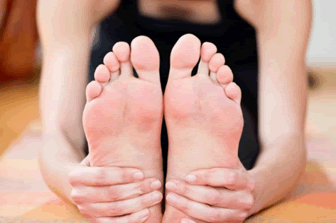 If you’re feeling pain in your heel and arch, it may be because of plantar fasciitis. Plantar fasciitis occurs when the fibrous tissues connecting your heel to your toe become inflamed. Heel pain from plantar fasciitis can flare up during the mornings and continue periodically throughout the day. The different treatment methods for plantar fasciitis include seeing your podiatrist to have your condition properly diagnosed, taking calcium and magnesium supplements, icing your feet to reduce inflammation, and stretching and massaging your muscles.
If you’re feeling pain in your heel and arch, it may be because of plantar fasciitis. Plantar fasciitis occurs when the fibrous tissues connecting your heel to your toe become inflamed. Heel pain from plantar fasciitis can flare up during the mornings and continue periodically throughout the day. The different treatment methods for plantar fasciitis include seeing your podiatrist to have your condition properly diagnosed, taking calcium and magnesium supplements, icing your feet to reduce inflammation, and stretching and massaging your muscles.
Plantar fasciitis can be very painful and inconvenient. If you are experiencing heel pain or symptoms of plantar fasciitis, consult with Dr. Steven Schwartz from Pennsylvania. Our doctor will assist you with all of your foot and ankle needs.
What is Plantar Fasciitis?
Plantar fasciitis is the inflammation of the thick band of tissue that runs along the bottom of your foot, known as the plantar fascia, and causes mild to severe heel pain.
What Causes Plantar Fasciitis?
· Excessive running
· Non-supportive shoes
· Overpronation
· Repeated stretching and tearing of the plantar fascia
How Can It Be Treated?
· Conservative measures – anti-inflammatories, ice packs, stretching exercises, physical therapy, orthotic devices
· Shockwave therapy – sound waves are sent to the affected area to facilitate healing and are usually used for chronic cases of plantar fasciitis
· Surgery – usually only used as a last resort when all else fails. The plantar fascia can be surgically detached from the heel
While very treatable, plantar fasciitis is definitely not something that should be ignored. Especially in severe cases, speaking to your doctor right away is highly recommended to avoid complications and severe heel pain. Your podiatrist can work with you to provide the appropriate treatment options tailored to your condition.
If you have any questions, please feel free to contact our offices located in Chambersburg and Mcconnellsburg, PA. We offer the newest diagnostic and treatment technologies for all your foot care needs.
Changing Dietary Habits Can Reduce Gout Pain
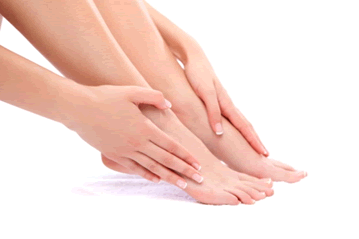 According to the Las Vegas Review, changing dietary habits and medications can reduce the pains of gout. Eating foods high in purines are the most common cause of gout; they are also some of the most indulgent. Steak, seafood, and beer all raise the levels of acid in your body, which causes the attacks most commonly felt in the big toe. Although hereditary and medications can also induce gout attacks, avoiding consumption of medication in addition to the foods can help reduce overall attacks.
According to the Las Vegas Review, changing dietary habits and medications can reduce the pains of gout. Eating foods high in purines are the most common cause of gout; they are also some of the most indulgent. Steak, seafood, and beer all raise the levels of acid in your body, which causes the attacks most commonly felt in the big toe. Although hereditary and medications can also induce gout attacks, avoiding consumption of medication in addition to the foods can help reduce overall attacks.
Gout is a foot condition that requires certain treatment and care. If you have any concerns regarding gout, consult with Dr. Steven Schwartz from Pennsylvania. Our doctor will assist you with all of your foot and ankle needs.
What is Gout?
Gout is a type of arthritis caused by a buildup of uric acid in the bloodstream. It often develops in the foot, especially the big toe area, although it can manifest in other parts of the body as well. Gout can make walking and standing very painful and is especially common in diabetics and the obese.
People typically get gout because of a poor diet. Genetic predisposition is also a factor. The children of parents who have had gout frequently have a chance of developing it themselves.
Gout can easily be identified by redness and inflammation of the big toe and the surrounding areas of the foot. Other symptoms include extreme fatigue, joint pain, and running high fevers. Sometimes corticosteroid drugs can be prescribed to treat gout, but the best way to combat this disease is to get more exercise and eat a better diet.
If you have any questions, please feel free to contact our offices located in Chambersburg and Mcconnellsburg, PA. We offer the newest diagnostic and treatment technologies for all your foot care needs.
Choosing Different Types of Shoes for a Night Out
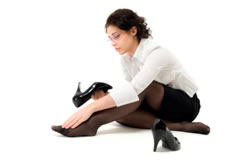 Although the pain from your New Year’s Eve shoes may still be hurting you, there are some tips to help avoid foot problems during your next night out. Shoes with a pointy toe may look sleek, but they squeeze all the toes together which could reduce in long term issues, such as bunions or hammertoes. Long term use of stilettos and platform pumps can add strain to your entire body due to an uneven weight distribution. Additionally all new shoes can cause friction, creating blisters on the feet if they are not the proper fit. During a night out, be sure to have a proper fitting shoe in order to reduce and prevent any ailments.
Although the pain from your New Year’s Eve shoes may still be hurting you, there are some tips to help avoid foot problems during your next night out. Shoes with a pointy toe may look sleek, but they squeeze all the toes together which could reduce in long term issues, such as bunions or hammertoes. Long term use of stilettos and platform pumps can add strain to your entire body due to an uneven weight distribution. Additionally all new shoes can cause friction, creating blisters on the feet if they are not the proper fit. During a night out, be sure to have a proper fitting shoe in order to reduce and prevent any ailments.
Finding a proper fitting shoe is important in reducing injuries and preventing foot problems. If you have any concerns about your feet or ankles, contact Dr. Steven Schwartz of Pennsylvania. Our doctor will treat your foot and ankle needs.
Proper Shoe Fitting
A common concern when it comes to foot health, having properly fitted shoes can help prevent injuries to the foot. Out feet affect our posture and gait, which in turn affects the biomechanics and overall bodily structure. With 33 joints, 26 bones, and over 100 ligaments, the potential for serious injury is much greater than one realizes. Although the feet cease growth in adulthood, they still change shape as they mature. Here are some factors to consider when it comes to investing in proper fitting shoes:
- Be sure the shoes fit correctly right away
- Ensure the ball of your foot fits comfortably in the widest portion of the shoes
- Even though they may look fashionable, improper fitting shoes can either create adverse conditions or exacerbate existing ones you may already have
- Walk along a carpeted surface to ensure the shoes comfortably fit during normal activity
Keeping in mind how shoes fit the biomechanics of your body, proper fitting shoes is vitally important. Fortunately, it is not difficult to acquire footwear that fits correctly. Be sure to wear shoes that support the overall structure of your body. Do your feet a favor and invest in several pairs of well-fitted shoes today.
If you have any questions please feel free to contact our offices located in Chambersburg and Mcconnellsburg, PA. We offer the newest diagnostic tools and technology to treat your foot and ankle needs.
Peyton Manning May Need Surgery for Foot Condition
 Peyton Manning has recently caused a stir in the football world due to his plantar fasciitis. The star has been suffering from a partial torn in the tendon, causing fans and experts to question his ability to serve as a backup quarterback. Accordingly, many think he should either move on from playing and coach instead in addition to finally having surgery on the foot, a typical last resort for the condition.
Peyton Manning has recently caused a stir in the football world due to his plantar fasciitis. The star has been suffering from a partial torn in the tendon, causing fans and experts to question his ability to serve as a backup quarterback. Accordingly, many think he should either move on from playing and coach instead in addition to finally having surgery on the foot, a typical last resort for the condition.
Foot surgery is sometimes necessary to fix a foot ailment. If you have any concerns about your feet or ankles, contact Dr. Steven Schwartz of Pennsylvania. Our doctor will treat your foot and ankle needs.
When Is Surgery Necessary?
Foot and ankle surgery is generally reserved for cases in which less invasive, conservative procedures have failed to help with the problem. Some of the cases in which surgery may be necessary are:
- Removing foot deformities like bone spurs and bunions
- Severe arthritis that has caused bone issues
- Cosmetic reconstruction
What Types of Surgery Are There?
The type of surgery you receive will depend on the nature of the problem you have. Some of the possible surgeries include:
- Bunionectomy for painful bunions
- Surgical fusion for realignment of bones
- Neuropathy decompression surgery to treat nerve damage
Benefits of Surgery
Although surgery is usually a last resort, it can provide more complete pain relief compared to non-surgical methods and may allow you to finally resume full activity.
Surgical techniques have also become increasingly sophisticated. Techniques like endoscopic surgery allow for smaller incisions and faster recovery times.
If you have any questions please feel free to contact our offices located in Chambersburg and Mcconnellsburg, PA. We offer the newest diagnostic tools and technology to treat your foot and ankle needs.

